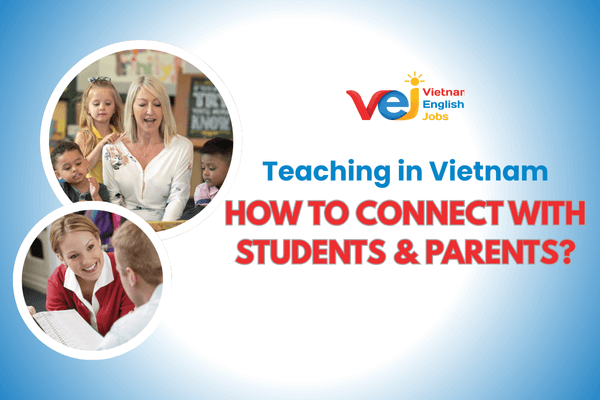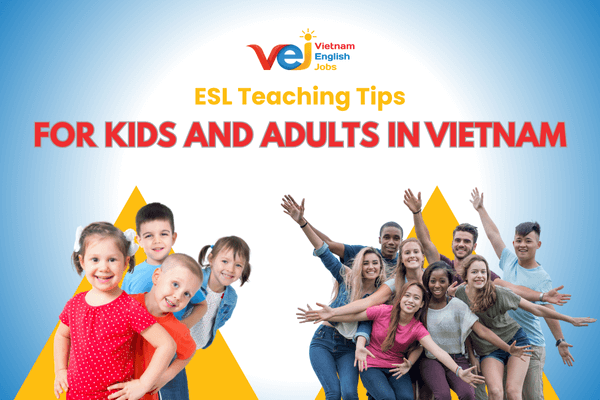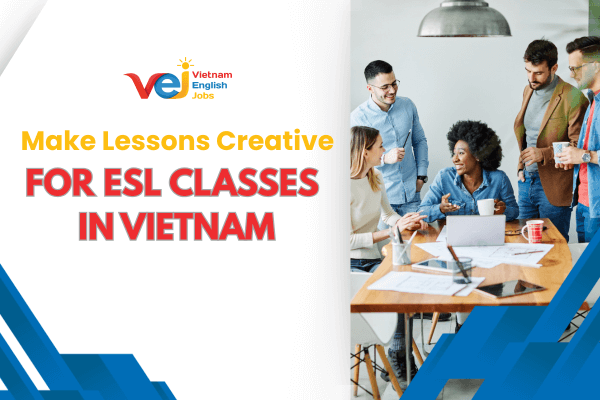Integrating Technology into ESL Classrooms in Vietnam
As Vietnam continues to modernize its education system, technology is becoming an essential tool in English as a Second Language (ESL) classrooms. For both Vietnamese students and foreign teachers, digital resources not only make learning more interactive but also bridge gaps in communication, comprehension, and engagement.
This article explores the benefits of integrating technology into ESL classrooms in Vietnam, practical tools that teachers can use, and tips for creating a balanced tech-enhanced learning environment.

1. Why Technology Matters in Vietnamese ESL Classrooms
- Engagement: Digital tools such as videos, apps, and games capture students’ attention better than traditional textbooks.
- Accessibility: Students can access lessons and resources anytime, supporting self-study outside of class.
- Personalization: Technology allows teachers to adapt content for different proficiency levels.
- Preparation for the Future: Familiarity with technology builds digital literacy, an important skill for both academic and career success.
* Teaching Tip: Combine traditional teaching with technology to balance structure and creativity.
2. Common Tech Tools for ESL in Vietnam
a. Interactive Whiteboards and Projectors
- Useful for displaying visuals, videos, and group activities.
- Keeps students focused and helps visual learners.
b. Language Learning Apps
- Duolingo, Memrise, and Quizlet are popular among Vietnamese learners.
- Teachers can assign vocabulary sets and track student progress.
c. Online Class Platforms
- Tools like Zoom, Google Classroom, and Microsoft Teams became common during COVID-19 but remain useful today.
- Enable hybrid learning, online assignments, and flexible lesson delivery.
d. Multimedia Resources
- YouTube videos, podcasts, and songs make lessons more dynamic.
- Authentic materials improve listening comprehension and cultural understanding.
e. Gamification and Quiz Tools
- Platforms like Kahoot, Quizizz, and Blooket turn lessons into fun competitions.
- Encourages participation, especially for shy Vietnamese students.
3. Challenges of Using Technology in Vietnam
- Infrastructure: Some public schools still lack modern equipment or stable internet.
- Digital Divide: Students from rural areas may have limited access to devices.
- Over-Reliance on Tech: Excessive screen time can reduce face-to-face interaction.
* Teaching Tip: Always prepare a backup activity in case of power outages or technical issues.
4. Best Practices for Foreign Teachers
- Blend Tech with Culture: Use technology but also connect with Vietnamese traditions and contexts (e.g., Tet holiday vocabulary games).
- Encourage Collaboration: Group projects using online tools like Google Docs or Padlet foster teamwork.
- Monitor Screen Time: Use technology in short, purposeful bursts rather than the entire lesson.
- Train Students Gradually: Some learners may need extra support with new platforms.
Integrating technology into ESL classrooms in Vietnam enhances learning by making lessons more engaging, interactive, and accessible. From apps and gamification to multimedia and online platforms, technology empowers both students and teachers to achieve better results.
However, success lies in balance: combining modern tools with traditional methods ensures students stay motivated without losing personal connection. For foreign teachers in Vietnam, technology is not just a teaching aid, it’s a bridge to more effective and enjoyable learning experiences.

















